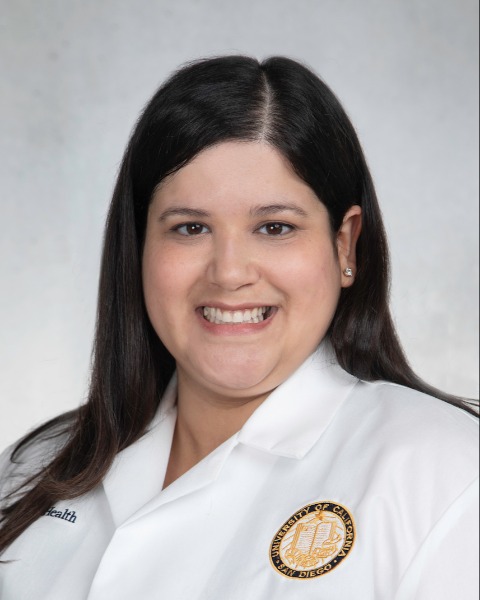Implantable Hearing Devices (IHD)
PP804 - Successful Audiological Outcomes with Bilateral ABI in a Patient with NF2
.jpg)
Madeline E. Gibson, BA
San Diego State University and University of California San Diego
SDSU & UCSD
San Diego, CaliforniaFinancial Disclosures: I do not have any relevant financial relationships with anything to disclose.
Non-Financial Disclosures: I do not have any relevant non-financial relationships with anything to disclose.
Alicia A. Williams, AuD (she/her/hers)
Senior Audiologist
University of California San Diego Health
San Diego, CaliforniaFinancial Disclosures: I do not have any relevant financial relationships with anything to disclose.
Non-Financial Disclosures: I do not have any relevant non-financial relationships with anything to disclose.
Lead Presenter(s)
Contributor(s)
Summary:
success.
Purpose: The aim was to evaluate the audiometric outcomes of an adult patient with neurofibromatosis type 2 (NF2) before and after a second auditory brainstem implant (ABI) implantation. Benefits of bilateral ABI in speech discrimination and sound field testing were assessed to measure the long-term outcomes and benefits of ABI and contributing factors of
Introduction: In cases of NF2 in which the cochlear nerve is compromised use of an ABI has proven to be an attractive treatment option. The ABI system is designed to restore some hearing sensation achieved through electrical stimulation of the cochlear nucleus complex in the brainstem. Studies have proven the effects of binaural stimulation in hearing aids and cochlear implantation patients. However less is known about the use of bilateral ABI outcomes. The aim of this case was to evaluate the audiometric outcomes of an adult neurofibromatosis type 2 (NF2) patient with bilateral auditory brainstem implants (ABI). Speech discrimination and sound field testing were assessed to measure long-term outcomes and benefits of ABI. A 34-year-old male with NF2 received initial auditory brainstem implantation of the right side in 2011 at an outside facility that was used for 10 years with significant benefit. Second implantation on the left was performed in August 2022 at our institution concurrently with vestibular schwannoma resection. Pre-operative audiogram results revealed no response at 110 dBHL on the right and severe to profound sensorineural hearing loss on the left with 0% speech discrimination bilaterally.
Methods: In total, 14 electrodes produced comfortable auditory only sensations. Impedances were run following psychophysical measurements and were acceptable. After one month of the left ABI being activated the right ABI was activated and reprogrammed as well. Aided assessment was completed prior to reprogramming and at each follow-up while patient wore a processor on each side individually and bilaterally. Aided sound field thresholds were obtained at 20-40 dBHL for 250-6000 Hz. Aided speech testing was completed using HINT sentences. Performance was assessed for audition, speech and language.
Results: The patient was assessed using sound field audiometry and HINT sentences with each ABI individually and bilaterally. Aided sound field thresholds were obtained at 20-40 dBHL for 250-6000 Hz. Speech perception was assessed using recorded and monitored live voice materials presented at 50 dBHL with and without visual cues. Following activation, unilateral ABI understanding increased from 14% to 63% (right) and 40% to 84% (left) at 6 months in audio-only condition and 93% to 96% (right) and 92% to 100% (left) in audio-visual condition. Bilaterally, audio-only open-set speech understanding increased from 71% to 92% at 6 months and 92-100% in audio-visual condition.
Conclusions: Patient performance with bilateral ABIs and individual ABIs (right and left) showed significant benefits in understanding speech and sentences with an improvement from 0% to 92% bilaterally. Performance exceeds expectations for environmental sound awareness and early speech perception and is a unique example of highly successful bilateral ABI audiological outcomes. This may be an example of how to better speech discrimination for NF2 patients and ABI recipients.Learning Objectives:
